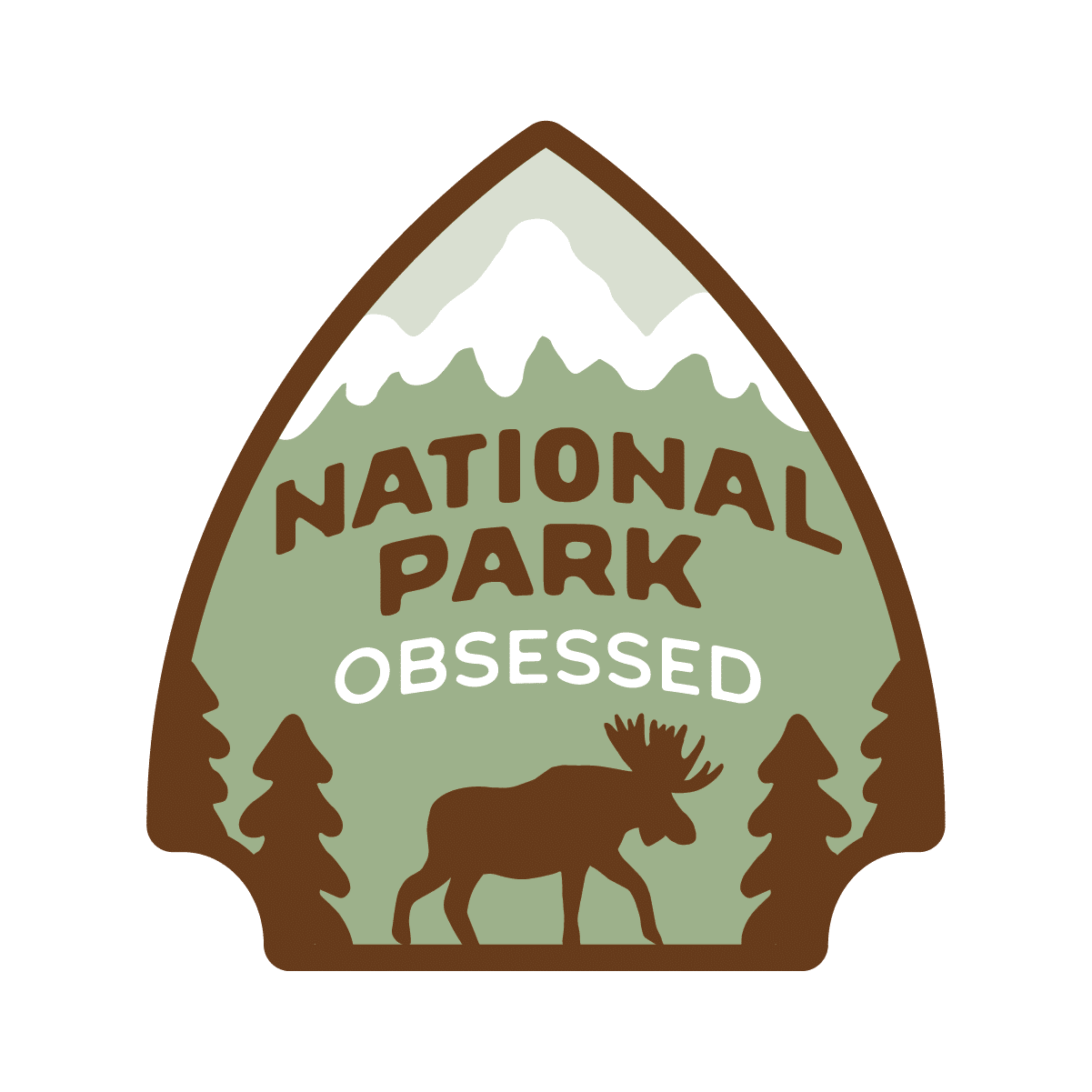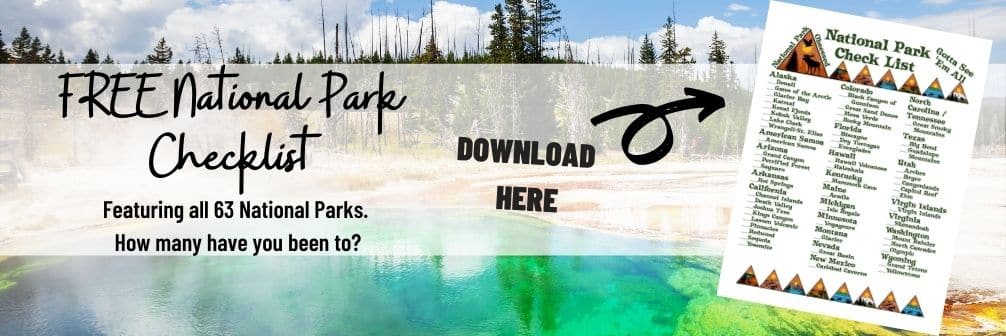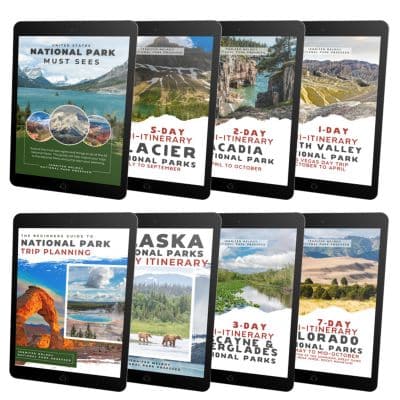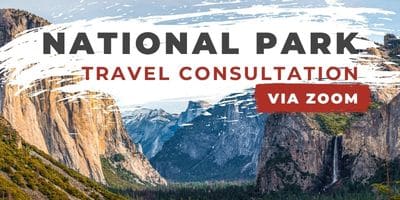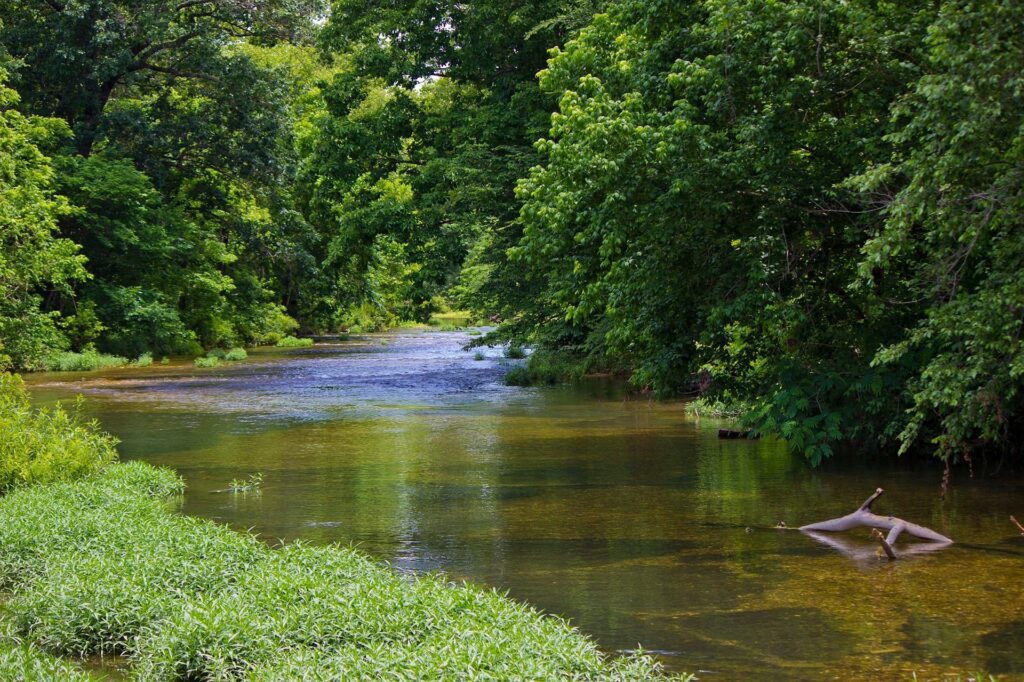
National Parks of Oklahoma
- Jennifer Melroy
- Last Modified October 14, 2021
- First Published on December 26, 2019
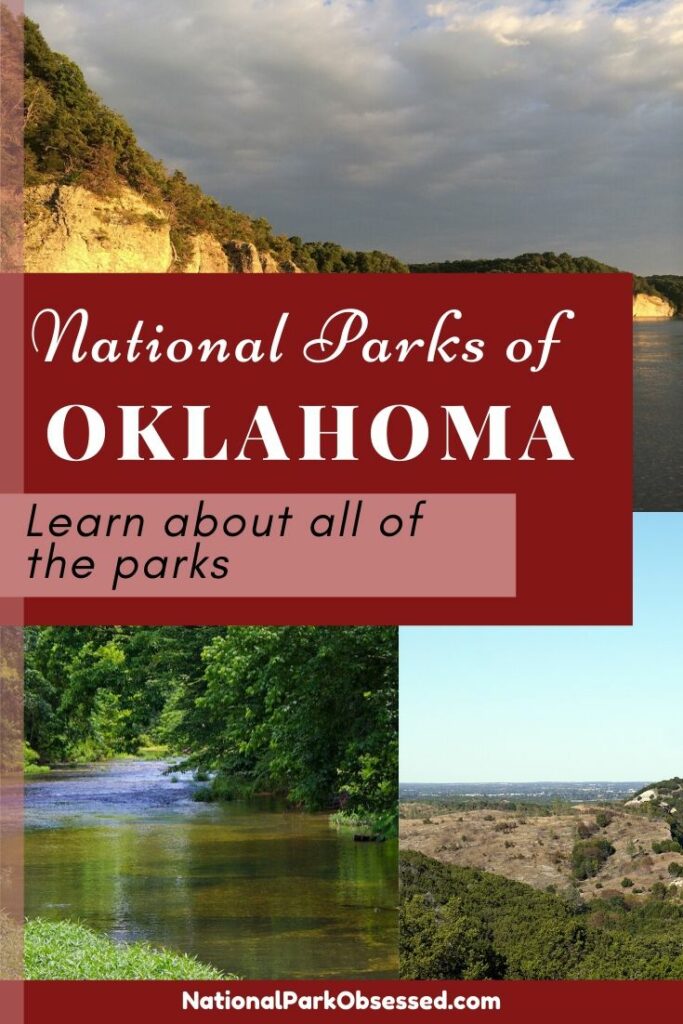
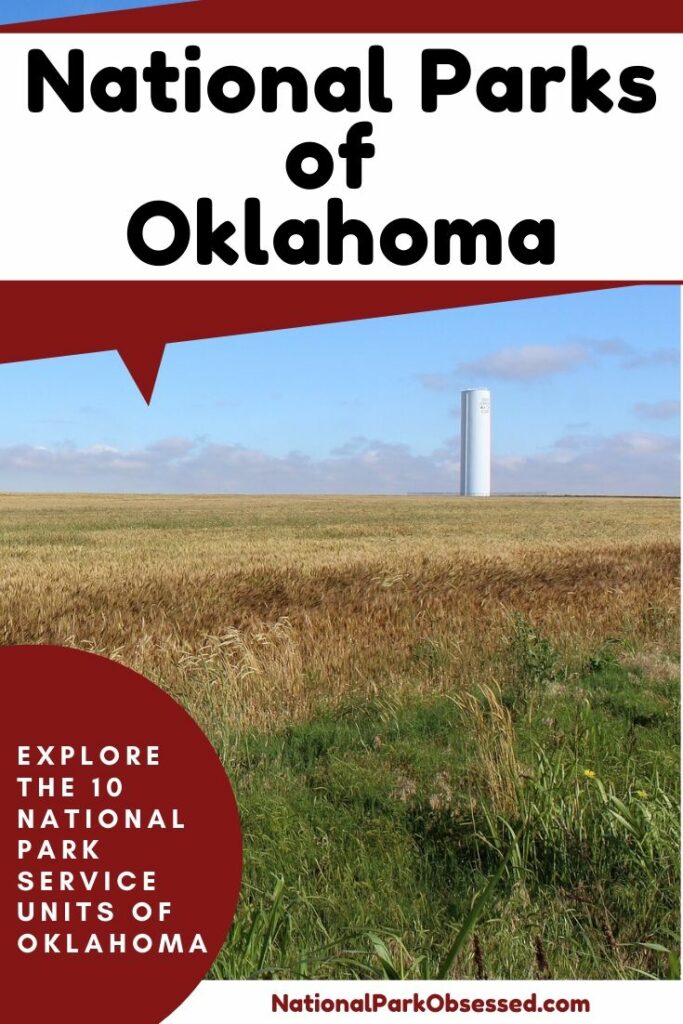
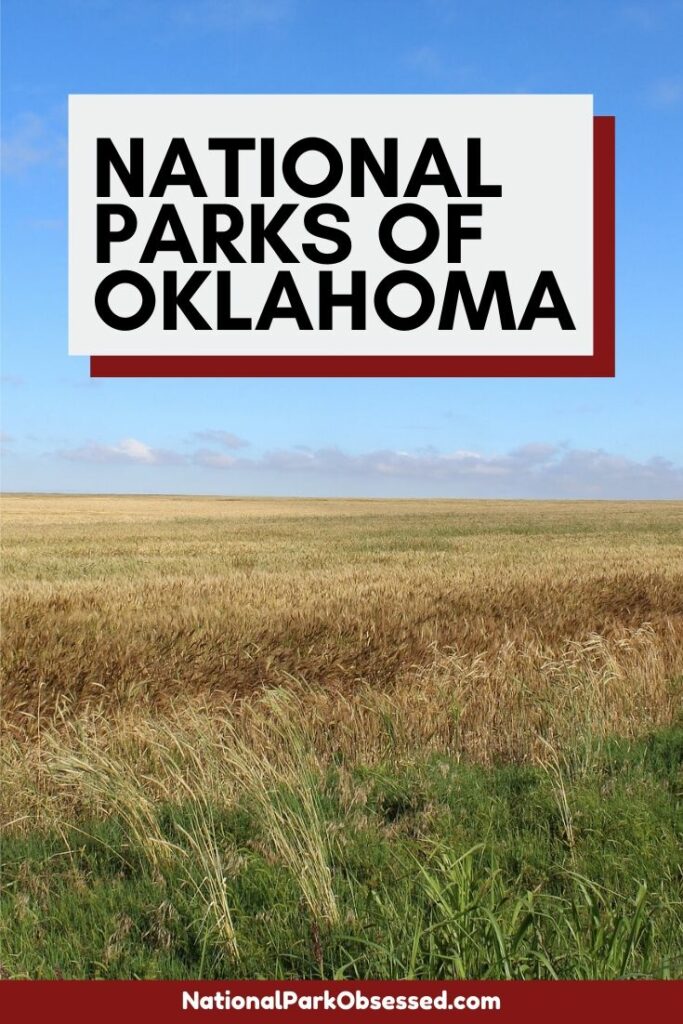
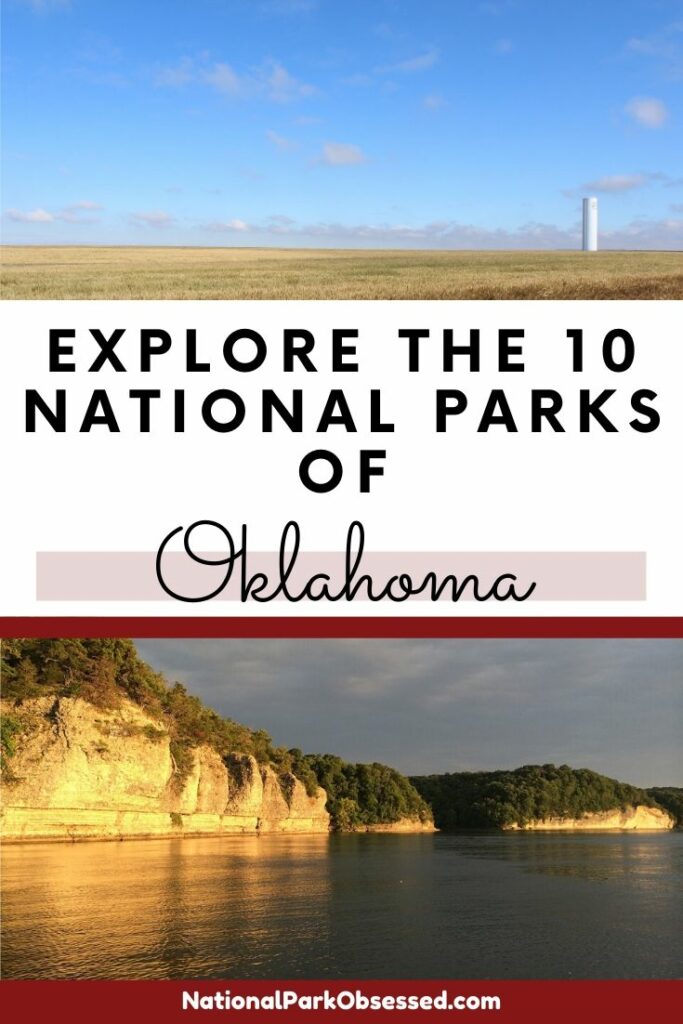
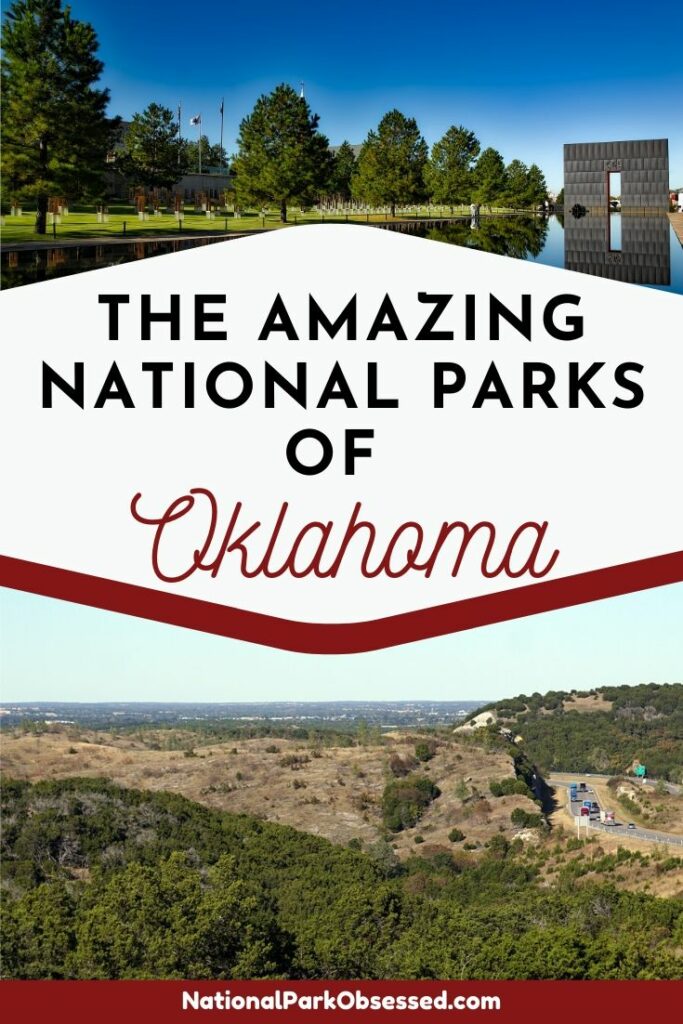
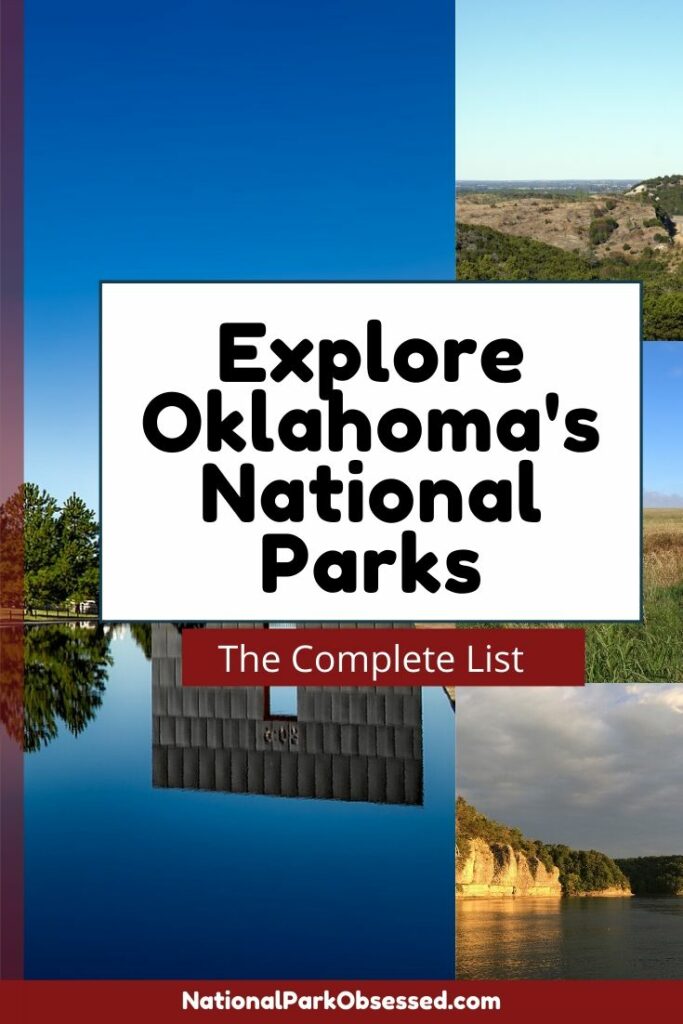
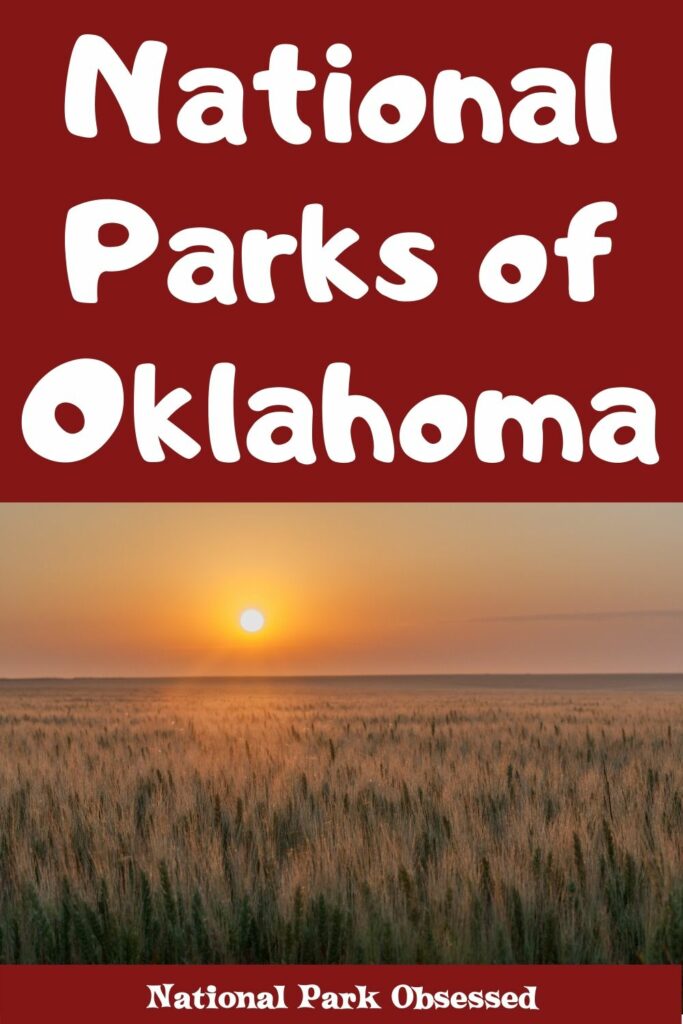
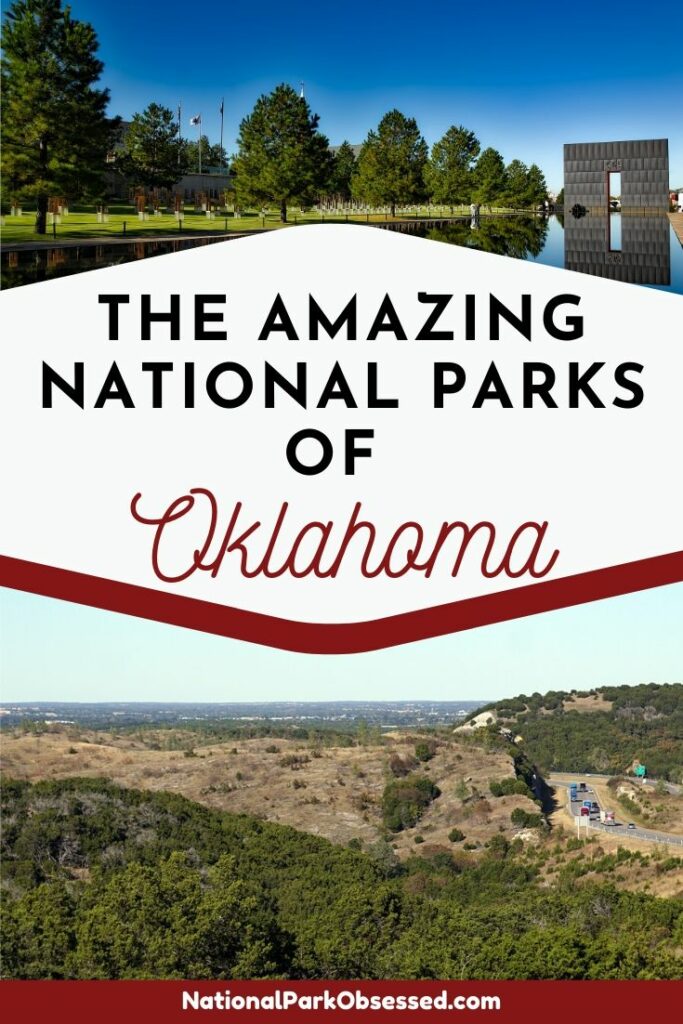
This post may contain affiliate links, meaning if you book or buy something through one of these links, I may earn a small commission at no extra cost to you! Read the full disclosure policy here
Oklahoma is part of the National Park Service’s Intermountain Region. Oklahoma’s landscape is made up of prairie’s mesas, easter forests and the remains of ancient mountain ranges. The state was a crossroads of Native American civilizations. Today over 25 different Native American languages are spoken in the state. There is currently three National Park Service Site in Oklahoma and three associated sites.
Help support this site by purchasing one of our National Park Shirts, Poster, and other gear. Every purchase includes a donation to the national parks and helps keep National Park Obsessed’s website free to use and producing more national park guides.
Looking for more help planning your next adventure? Join the National Park Obsessed Facebook Group here to connect other national park lovers, trade advice, or see inspiring photos of the National Parks?
Official National Parks of Oklahoma
- Chickasaw National Recreation Area
- Fort Smith National Historic Site
- Washita Battlefield National Historic Site
Associated sites of Oklahoma
- Oklahoma City National Memorial
- Santa Fe National Historic Trail
- Trail of Tears National Historic Trail
Map of National Parks in Oklahoma
[show-map id=”72″]
Oklahoma National Parks
Oklahoma is part of the Southwest Region.
Chickasaw National Recreation Area
Chickasaw National Recreation Area is located in the foothills of the Arbuckle Mountains and protects the partially forested hills, springs, streams, and lakes. When the Choctaw and Chickasaw Nationa were forced out of the southern United States they were given this area as part of the NEW Chickasaw Nation. The Chickasaw found a collection of mineral and freshwater springs. As time passed and the region was developed, the Chickasaw watched the private development of Hot Springs, Arkansas. They feared that these mineral springs would be privatized in the same manner. In 1902, the Chickasaw sold the springs to the US Government to protect the springs from the private resort developers.
Visitors to Chickasaw National Recreation Area will find a range of things to do. Boating on the Lake of the Arbuckles is one of the park’s most popular activities. There are four boat ramps for all types of boats. There are plenty of places to swim in the park. Swimming is offered in many of the lakes and along the Travertine and Rock Creeks. The park has hiking, biking, and horseback riding opportunities.
Chickasaw National Recreation Area was established on July 1, 1902, as the Sulphur Springs Reservation. It was elevated to Platt National Park in June 29, 1906. It was the US’s 7th National Park and the smallest National Park ever created until 2017. On March 17, 1976, Platt National Park was demoted and expanded. With its demotion came with a significant expansion and the site was renamed Chickasaw National Recreation Area.
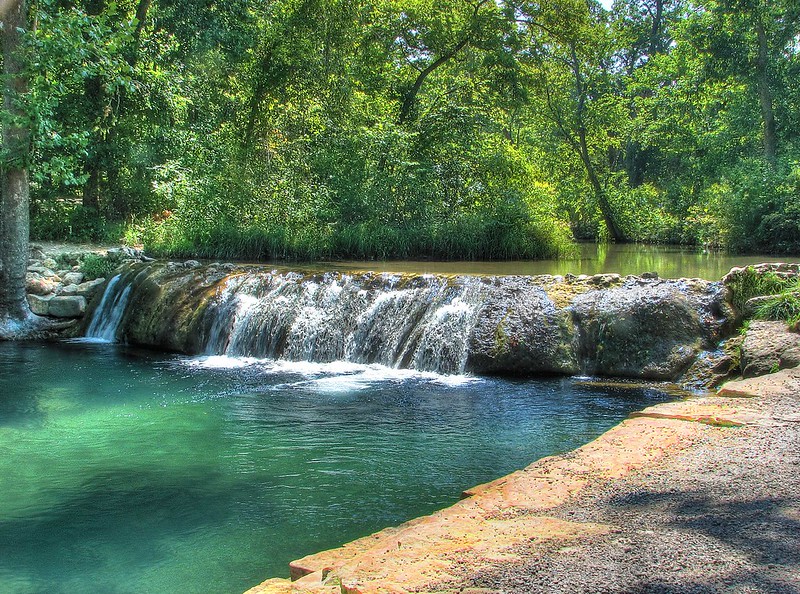
Fort Smith National Historic Site
Fort Smith National Historic Site protects the 19th-century military forts. These forts were used by the United States military during the US’s westward expansion. Fort Smith was preserved for its military history from 1817 to 1871. The site was home to United States District Court for the Western District of Arkansas. This district court was presided over by Isaac Charles Parker for twenty years. Parker was nicknamed the “Hanging Judge of the American Old West” due to the number of death sentences he handed out. Parker’s court was sensationalized due to this but his court was central in the legal fights between the Indian Nationals and settlers. When the Indian Removal Act went into effect, Fort Smith was an important stop on the Trail of Tears.
Visitors to Fort Smith can explore the remaining buildings such as the jails, courtroom and exhibits on Indian Removal, and Deputy U.S Marshals. One can explore the complex history of the area and take a walk along the Arkansas River.
Fort Smith National Historic Site was established on September 13, 1961. The Fort is also included as a US National Register of Historic Places and US National Historic Landmark District. This park is primarily located in Arkansas, but there is a small section of the park is located in Oklahoma.
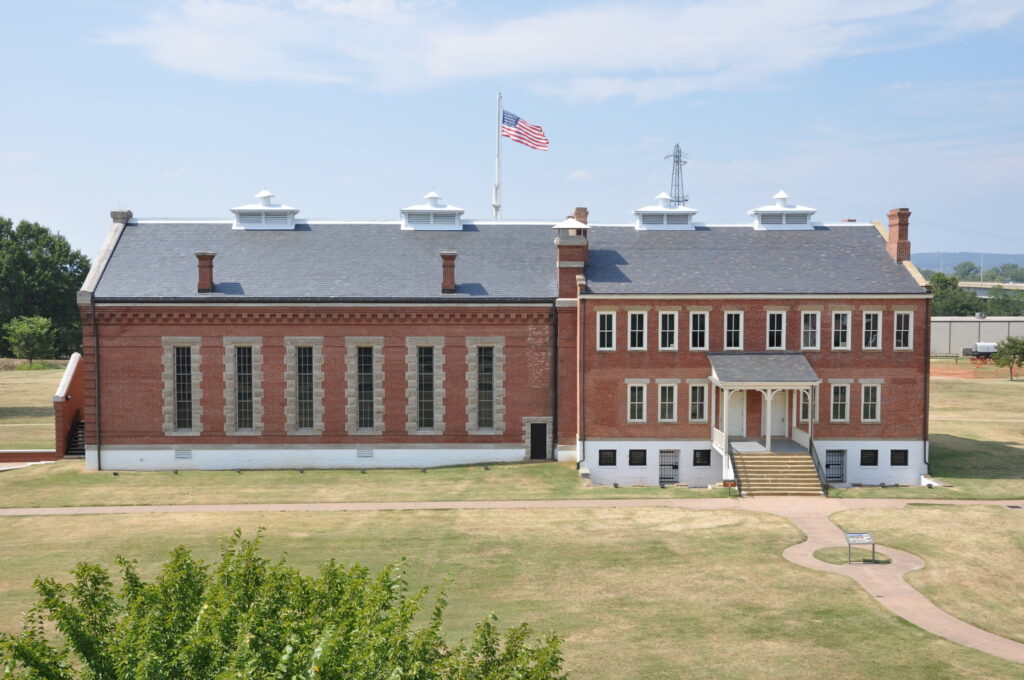
Washita Battlefield National Historic Site
Washita Battlefield National Historic Site protects and interprets the Battle of Washita and the remains of one of the Southern Cheyenne villages. In November 1868, a band of Southern Cheyenne and other tribes led by Chief Black Kettle set up a winter encampment. Black Kettle and his people were in the area seeking peace. On the night of November 25th, a group of young men went against their chief’s wished and raided white settlements. The 7th US Cavalry lead by Lt. Colonel George Custer tracked these young men back to the Washita encampment. On the early morning of November 26th, Custer and his men attacked the encampment. Accounts of what happened during the “Battle” vary, but Custer did take women and children hostage and used them as human shields for his men as part of his “total war” strategy. There is plenty of debate on if this event was a battle or massacre. Depending on the source somewhere between 16 and 150 men, women and children were killed.
Visitors to the Washita Battlefield can tour the visitor center and watch a film about the engagement and explore the history and touch tables. Outside of the visitor center, visitors can walk the 1.5-mile Washita Battlefield Park Trail. The first half of the trail is handicapped accessible and has 15 numbered stops with an education brochure. There is a second short walking trail near the visitor center. This trail is 0.5 miles and stops by the Native Plant Garden.
Washita Battlefield National Historic Site was established on November 12, 1996. The battlefield is also included as a US National Register of Historic Places and US National Historic Landmark.
Oklahoma City National Memorial
Oklahoma City National Memorial is dedicated to the victims, survivors, and rescuers of the Oklahoma City bombing. The Oklahoma City bombing was a domestic terrorist bombing of the Alfred P. Murrah Federal Building in Oklahoma City, Oklahoma on April 19, 1995. The attack killed 168 people and injured more than 680. The memorial was authorized in October 1997.
Visitors to Oklahoma City Memorial is can explore the open-air 3.3-acre memorial. The memorial is made up of two twin bronze gates that frame the reflecting pool. On the site of the Murrah Building are 168 glass and bronze chairs that represent the men and women killed in the bombing. The 19 smaller chair represent the 19 children killed in the attack. The Survivors’ wall has the names of the survivors on it.
Oklahoma City National Memorial was dedicated on April 19, 2000, and the museum opened on April 19, 2001. The memorial was originally designated as an official National Park Service unit but in 2004 it was transferred to the Oklahoma City National Memorial Foundation.

Santa Fe National Historic Trail
Santa Fe National Historic Trail was a freight transportation route from Franklin, Missouri, and Santa Fe, New Mexico. The route runs through Missouri, Kansas, Oklahoma, Colorado, and New Mexico. The trail splits in Kansas into the Mountain Route which heads further west into Colorado before heading south and the Cimarron Cutoff which crosses the Cimarron Desert and goes through Oklahoma. The trail was established in 1822 to encourage trade between the US and Mexico.
Today, visitors to the Santa Fe National Historic Trail is an autoroute. Along the way, there are many local, state and federal sites to explore to learn more about the route and the region’s history. Autograph Rock near Boise City, Oklahoma was an important stopping place as it was one of the few year-round water sources in this region.
Santa Fe National Historic Trail was created in 1987.
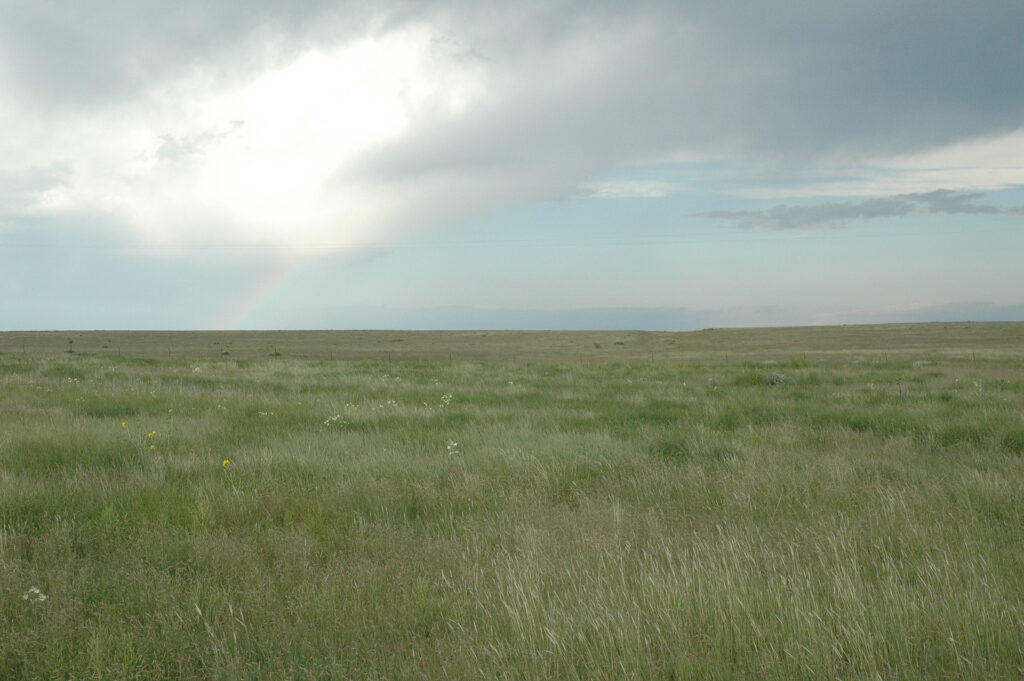
Trail of Tears National Historic Trail
The Trail of Tears National Historic Trail follows the different routes members of the Cherokee, Muscogee (Creek), Seminole, Chickasaw, Choctaw, Ponca, and Ho-Chunk/Winnebago nations were forced to march for resettlement as part of the Indian Removal Act. The Trail of Tears follows the four main routes from Tennessee, North Carolina, and Georgia through Kentucky, Illinois, Missouri, Alabama, Mississippi, Arkansas on their way to Oklahoma.
The Trail of Tears National Historic Trail stands as a reminder of the horrific treatment the American Indians suffered at the hands of the U.S government. It is estimated between 2,000 – 8,000 Cherokee died along the trail (that doesn’t include deaths of any of the other tribes or deaths in the Seminole wats).
Today, visitors to the Trail of Tears can drive any one of the four main autoroutes and visit sites such as the Cherokee County Historical Museum, Brainerd Mission Cemetery, Cherokee National Museum, and Fort Payne Cabin Site to learn more about the journey the American Indians were forced to make and the challenges they faced.
Trail of Tears National Historic Trail was created in 1987.
Things to do in Trail of Tears National Historic Trail: Historical Sites, Museums, auto touring, walking
How to get to Trail of Tears National Historic Trail: The trail follows several routes as it pass through Tennessee, North Carolina, and Georgia through Kentucky, Illinois, Missouri, Alabama, Mississippi, Arkansas and Oklahoma
Where to Stay in Trail of Tears National Historic Trail: There is no lodging on the trail itself, but multiple options are located along the route the trail.
Trail of Tears National Historic Trail Entrance Fee: Free
Trail of Tears National Historic Trail Official Website: Click Here
Map of Trail of Tears National Historic Trail: Download
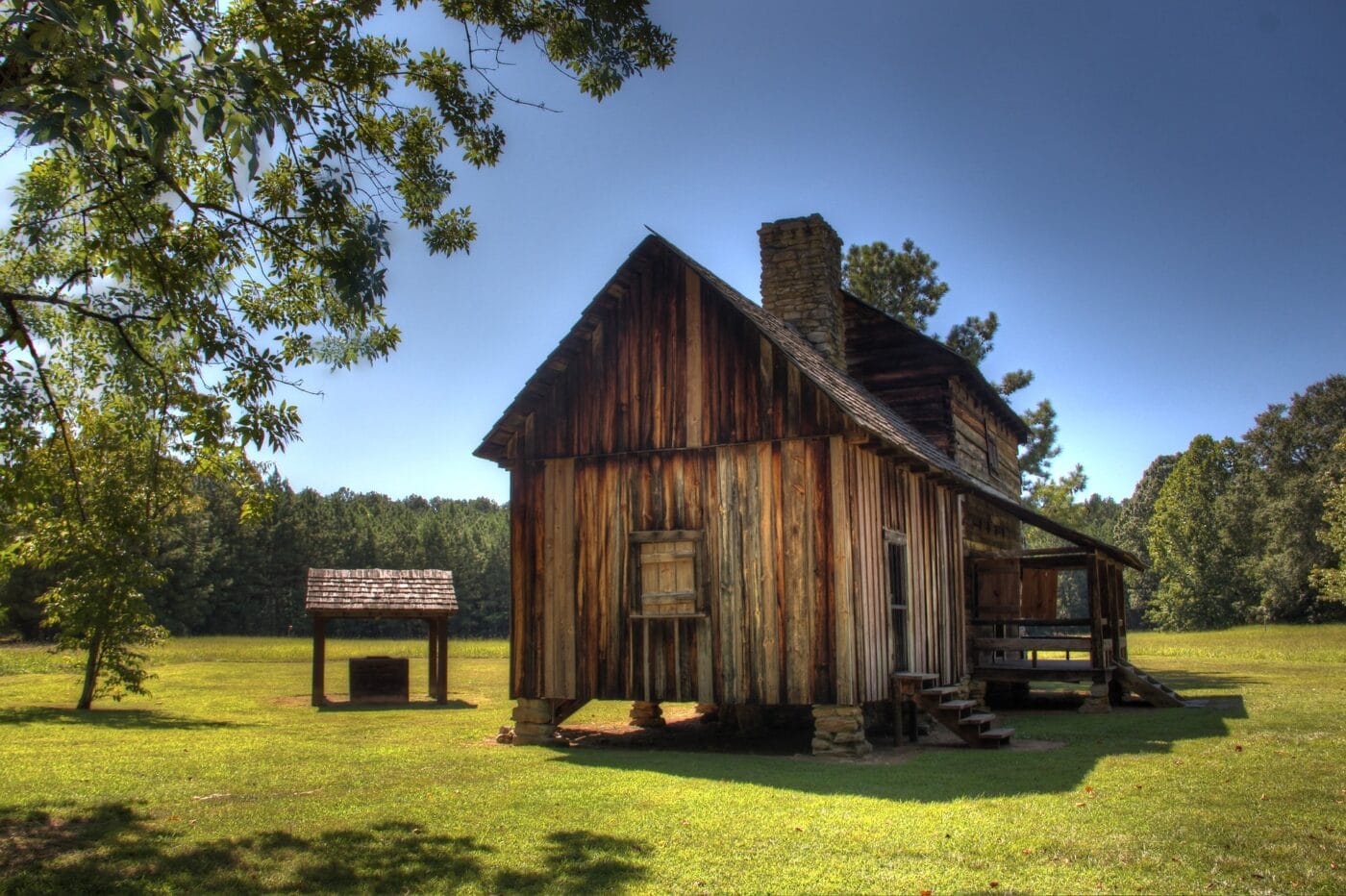
View all the National Park Service Sites in neighboring states:
- National Parks of Arkansas
- Colorado National Parks – Colorado is home to Black Canyon of the Gunnison, Great Sand Dunes, Mesa Verde and Rocky Mountain National Parks and 9 other units.
- National Parks of Kansas
- Missouri National Parks – Missouri is home to Gateway Arch National
ParkMemorial and 7 other units - National Parks of New Mexico
- National Parks of Texas

Jennifer Melroy
Hi, I'm Jennifer!

Welcome to the wonderful world of National Parks. I'm here to help you plan your NEXT amazing adventure through the United States National Parks and beyond. I want the national parks to be accessible to all.
I live in Tennessee, and when I'm home, you can find me hiking in the Smokies and the Cumberland Plateau.
58/63 National Parks
250+/423 National Park Units
Want to know more? Start Here.
ACKNOWLEDGEMENT OF LAND
On this site, we promote travel to the United States and beyond that are the traditional lands of Indigenous and First Nations peoples.
With respect, I make a formal land acknowledgment, extending my appreciation and respect to these lands’ past and present people.
To learn more about the people who call these lands home, I invite you to explore Native Land.
DISCLAIMER
National Park Obsessed assumes no responsibility or liability for any errors or omissions in the content of this site (NationalParkObsessed.com). The information contained in this site is provided with no guarantees of completeness, accuracy, usefulness or timeliness. You are encouraged to conduct your own due diligence before acting on the information provided on this site and should not rely on the opinions expressed here.
There is an inherent risk in all outdoor recreation activities, the reader assumes all responsibility for their own personal safety.
DISCLOSURE
We are a participant in the Amazon Services LLC Associates Program, an affiliate program designed to provide a means for us to earn fees by linking to Amazon.com and affiliated sites.
Privacy Policy • About Us • Contact
Select stock photography provided depositphotos
Copyright ©2023 National Park Obsessed, LLC
Privacy Overview
Last Updated on 14 Oct 2021 by Jennifer Melroy
